兰卡斯特大学 (Lancaster University):讲述京都文化旅游发展的新趋势

New trends
新趋势
More than ever, people are nowadays interested in historical background, cultural identity, cultural meanings, meanings conveying historical heritage in the whole, and are searching very intensely for these issues. (Robinson et al., 1996b). In addition, the interaction between visitors and the place they visit, the participants seek to learn and experience the cultural and historic features of local people’s everyday life precisely because it is something that most people do not experience in their normal life, and also play a big part of cultural tourist’s interest. “The visitor is increasingly immersed in the experience and participates.” (Buhalis and Costa, 2006a, p.241).
超出任何时候,人们当今对历史背景,文化认同,文化意思,在整个历史遗产传承意义感兴趣,并非常强烈的搜索这些问题。(Robinson等,1996年b)。此外,游客和他们访问的地方之间的互动,参与者寻求学习和体验当地人们的日常的生活正是文化和历史特点,因为是东西,大多数人没有经历在他们的正常生活,也发挥文化旅游的权益的重要组成部分。 “访客越来越多地沉浸在体验和参与。”(Buhalis and Costa, 2006a, p.241)。
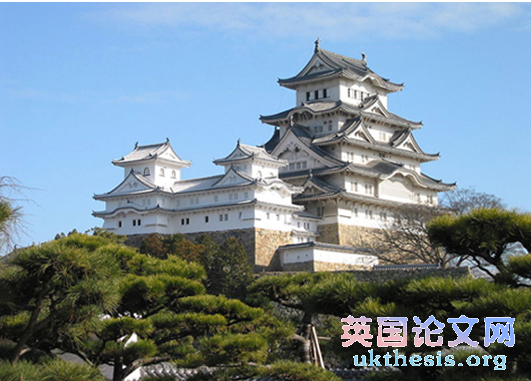
Picture 2: Himeji Castle
图2:姬路城堡
Source: United Nations World Tourism Organization (2010)
As it was stated before, tourism regards culture, and especially cultural heritage, as one of the fundamental motivation factors of culture tourists’ journeys. However, the motivation and the tourist behaviour are complicated, some types of cultural tourists may visit one site but for different reasons and seek different experiences. For example, as previously noted, the Asian youth travel to Japan for their cultural pilgrimage, they may visit Himeji Castle (see picture 2) which is located within the big Kyoto region, as many popular movies and TV dramas take place around this area, such as ‘篤姬’ (ATSUHIME). It also attracts purposeful and sightseeing cultural tourists because it is the most important historic castle in Japanese history, http://ukthesis.org/dissertation_sampleand has been recognized as national treasure, it is also the first Japanese heritage site which was registered on UNESCO's (United Nations World Tourism Organization) World Heritage list in 1993.
有人说,旅游文化,尤其是文化遗产方面,为文化的游客的行程基本激励因素之一。然而,复杂的动机和旅游行为,某些类型的文化游客可能访问一个网站,但出于不同的原因,并寻求不同的体验。例如,如前所述,他们的文化朝圣亚洲青年到日本旅游,他们可能前往姬路城(参见图2),这是位于大京都地区内,许多流行的电影和电视剧在这个区域附近的地方,如'笃姬'(笃姬)。这也吸引了有目的和观光文化游客,因为它是在最重要的历史性城堡在日本历史上,并已经公认的国宝,它是也的第一个日本遗产网站被联合国教科文组织的(美国联合国世界旅游组织)世界遗产登记在1993年的名单。#p#分页标题#e#
Although, everyday culture increasingly infuses cultural tourism patterns. The comprehensive tour play a key part of the overall cultural experience than simply heritage sites, though historic buildings visits and classical performances, traditional events and festivals remain an essential part of cultural tourism. The everydayness of culture, involves tourists spending large amounts of time walking around, experiencing the atmosphere of the city. “Cultural heritage tourists are active participants, learning and experiencing the ‘other’ they visit.” (Novelli, 2005, p.112) As a result, “heritage attractions can no longer be marketed as static products but must be dynamic experiences.” (Drummond and Yeoman, 2001, p.246)
虽然,日常文化越来越多地注入文化旅游模式。综合旅游,发挥整体文化体验的一个关键部分不是简单地遗址,参观历史悠久的建筑和古典表演,传统活动和节日虽然仍然是一个文化旅游的重要组成部分。日常性文化,包括游客,花费大量的时间四处走动,体验这个城市的气氛。 “文化遗产游客的积极参与者,学习和体验的'其他'他们访问”(诺维,2005年,第112页)因此,“文物景点再也不能在市场上销售为静态的产品,但必须是动态的经验。”(Drummond 和 Yeoman, 2001, p.246)
The culture of a region offers a rich resource of tourist experiences beyond solely the enjoyment of literature, architecture and museums, it is what imparts character to a tourist destination. Despite those traditional attractions still playing a key role in the cultural tourism market; Kyoto provides a wide range of learning and experiencing on its traditional intangible culture associated with traditional cultural features and combine special interests, activities and experiences. For example, the class of a Tea Ceremony while wearing a real kimono (see picture 1 and 2), the Art of Flower Arrangement (see picture 3), Japanese Shodo, or calligraphy (see picture 4); the traditional Kyoto style dancing; Kyoto Cuisine; especially, the experience at the Geisha community: the cultured district of Kyoto where Geisha and Maiko live, study and work; and the important traditional culture including Japanese music and dance are alive. The tourist also could learn how a traditional Geisha make up and dress up, and teaching is by highly skilled artists. Such products include elements of education, knowledge development, and internal exploration which become an important part in the Kyoto tourism market.
一个地区的文化提供了丰富的资源的旅游经验,超越纯粹的享受文学,建筑和博物馆,它是什么赋予字符旅游目的地。尽管那些传统景点,至今仍发挥着关键作用,在文化旅游市场;京都提供了广泛的学习和体验传统非物质文化与传统文化的特点,并结合特殊利益集团的活动和经验。例如,茶道之类的,而穿着一个真正的和服(见图1和2),插花艺术(参见图3),日本书法,书法(参见图4);传统的京都风格的舞蹈;京都料理,特别是在艺伎界的经验:京都的艺妓和舞妓住,学习和工作,以及重要的传统文化,包括日本的音乐和舞蹈是活的养殖区。游客还可以学习传统的艺妓如何化妆和打扮,教学是高度熟练的艺术家。此类产品包括教育,知识的发展,并成为在京都旅游市场的重要组成部分的内部探索。#p#分页标题#e#
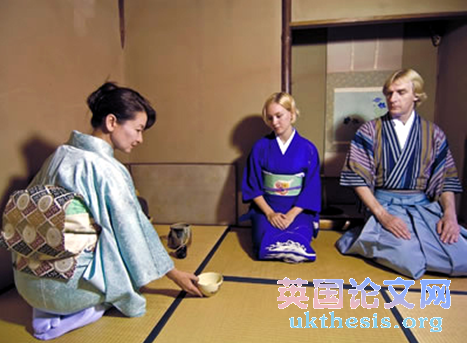 Picture 1: Western visitors learn traditional Tea Ceremony in Teahouse
Picture 1: Western visitors learn traditional Tea Ceremony in Teahouse
图1:西方游客在茶馆学习传统茶道
Source: Kyoto Travel Guide (2010)
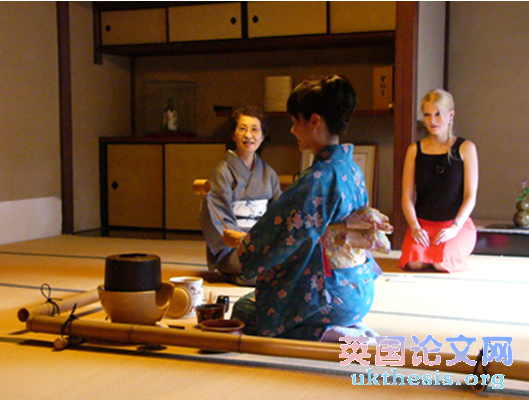
Picture 2: Western visitors learn traditional Tea Ceremony in Teahouse
图2:西方游客在茶馆学习传统茶道
Source: Kyoto Travel Guide (2010)
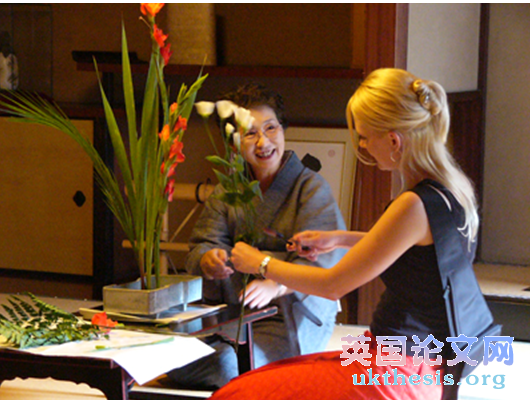
Picture 3: Western visitors experience the Art of Flower Arrangement
图3:西方游客学习插花艺术
Source: Kyoto Travel Guide (2010)
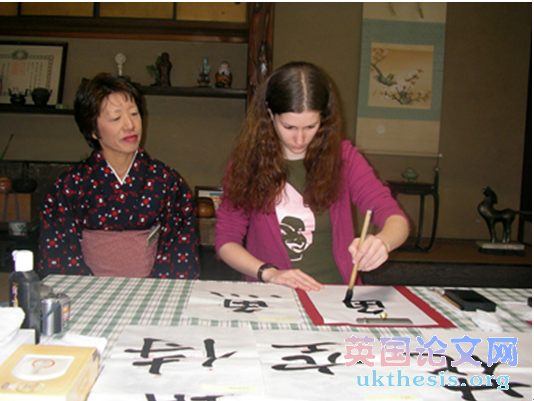
Picture 4: Western visitors learn the Japanese Shodo, or calligraphy
图4:西方游客学习日本书道,或书法
Source: Kyoto Travel Guide (2010)
While the appreciation of “high culture” remains as important focus for the Kyoto tourism industry, another new and powerful trend has been increasingly impacting on the cultural tourism demand. In recent decades, huge numbers of youths who have been influenced by the Japanese popular culture from other parts of Asia travel to Japan, those young visitors “prefer package guided tours to attractions” and they “mostly travel independently to Japan for their cultural pilgrimage.” (Cochrane, 2008, p.183)
Kyoto is a place that rich of traditional culture forms including many festivals, ceremonies which has long history and reputation. Specially the three famous festivals: Aoi Festival (Date: 15 May), Gion Festival (Date: 1-31 July), Jidai Festival (Date: 22 October) and Gozan Fire Festival (Date: Starting from 8pm on 16th August). Those festivals have become natural parts of the national culture, are constructed as tourist attractions that lure tourists to destinations. Event attendance are the outcome of tourists’ motives, as well as marketing, destination features and contingency factors such as money, health and time relating to the traveller’s choice of behaviour.
京都是一个富有丰富的传统文化形式的地方,包括许多节日,庆典,具有悠久的历史和声誉。特别是三个著名的节日:葵祭(日期:月15日),祗园祭(日期:1-317月),时代祭(日期:10月22日)和五山送火节(日期:8月16日,从晚上8点开始)。这些节日已成为国家文化的自然部分,构建旅游景点,吸引游客到目的地。事件出席旅游者的动机,以及市场推广,目标特征和权变因素,如金钱,健康和时间有关旅客的选择行为的结果。
